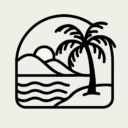Rock Climbing
You may be surprised to hear that Puerto Rico has excellent rock climbing and enormous potential for future rock climbing development. The majority of the developed crags are limestone, but not all. There are bouldering locations, deep water solos, multi-pitch climbs, and hundreds of sport routes. Some of the locations have incredible views of the ocean or mountains.
I am not an expert climber. Climbing is one of the many hobbies I enjoy, using mediocre skills at best. These days, I am most comfortable on the easiest climbs (5.7 – 5.9 sport lead), just enjoying the beauty of the great outdoors and praying my wife doesn’t drop me to my death.
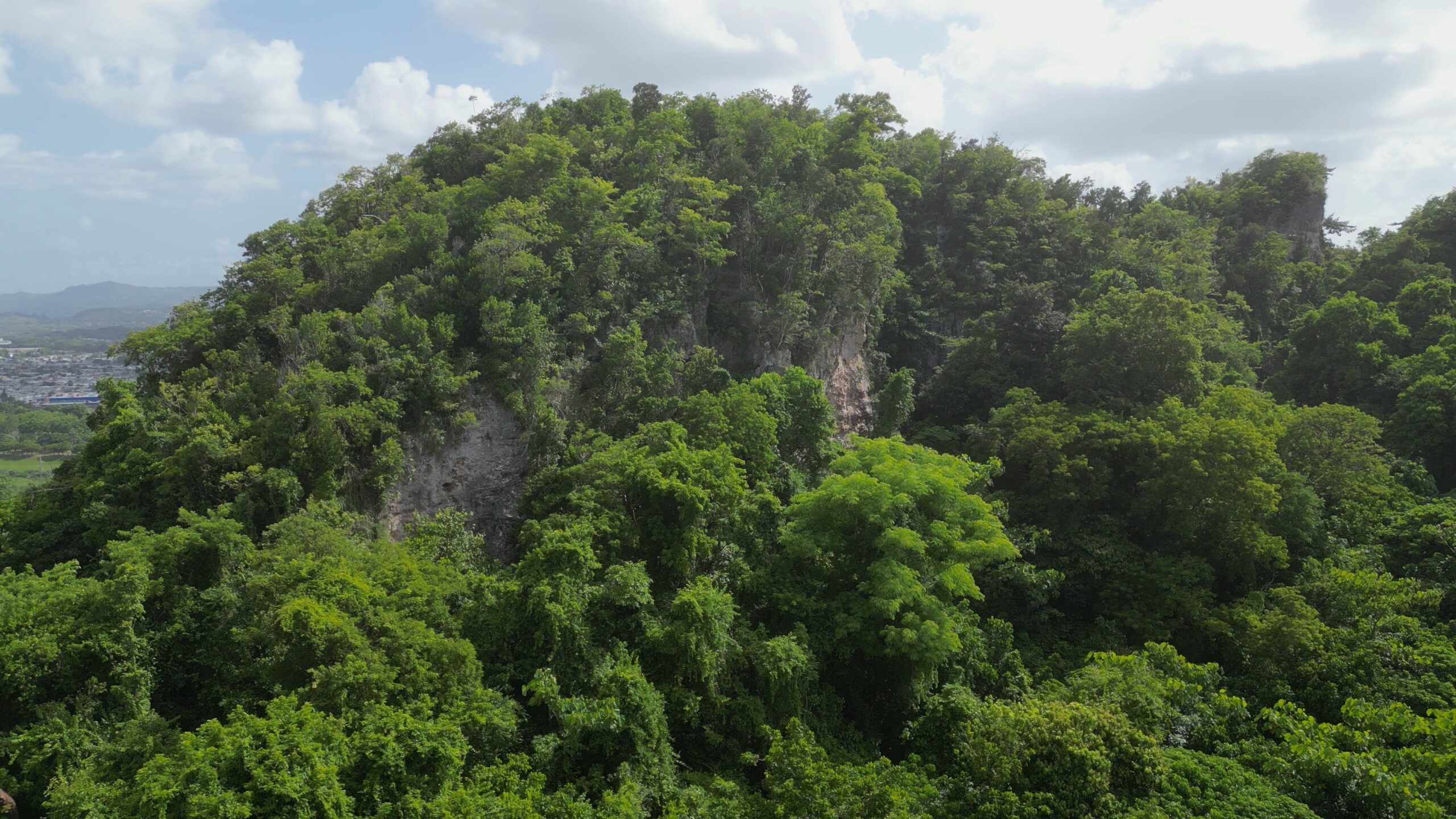
Monagas is by far the most popular crag in Puerto Rico due to its proximity to the metropolitan area of San Juan. It has a nice variety and quantity of climbs (249 total climbs). Estacione in a lot that costs $4/car when the attendant is there. Hike on a dirt trail past zigzagging mountain bike trails to the climbing area. There are many areas to choose from. The rock consists of sharp finger holes and also a kind of melted candle wax texture in some spots. This is most apparent in El Pasillo.

El Pasillo is a great place to move to if it starts raining as there are several covered climbs. I have never climbed anything like it. It seems that water has run down the limestone walls for centuries, sometimes through the partial roof, to create partial columns fixed to the wall. It has the appearance of melted candle wax. I found myself employing a lot of pinches to work my way up to the bolts which are located within arm’s reach of the ceiling.
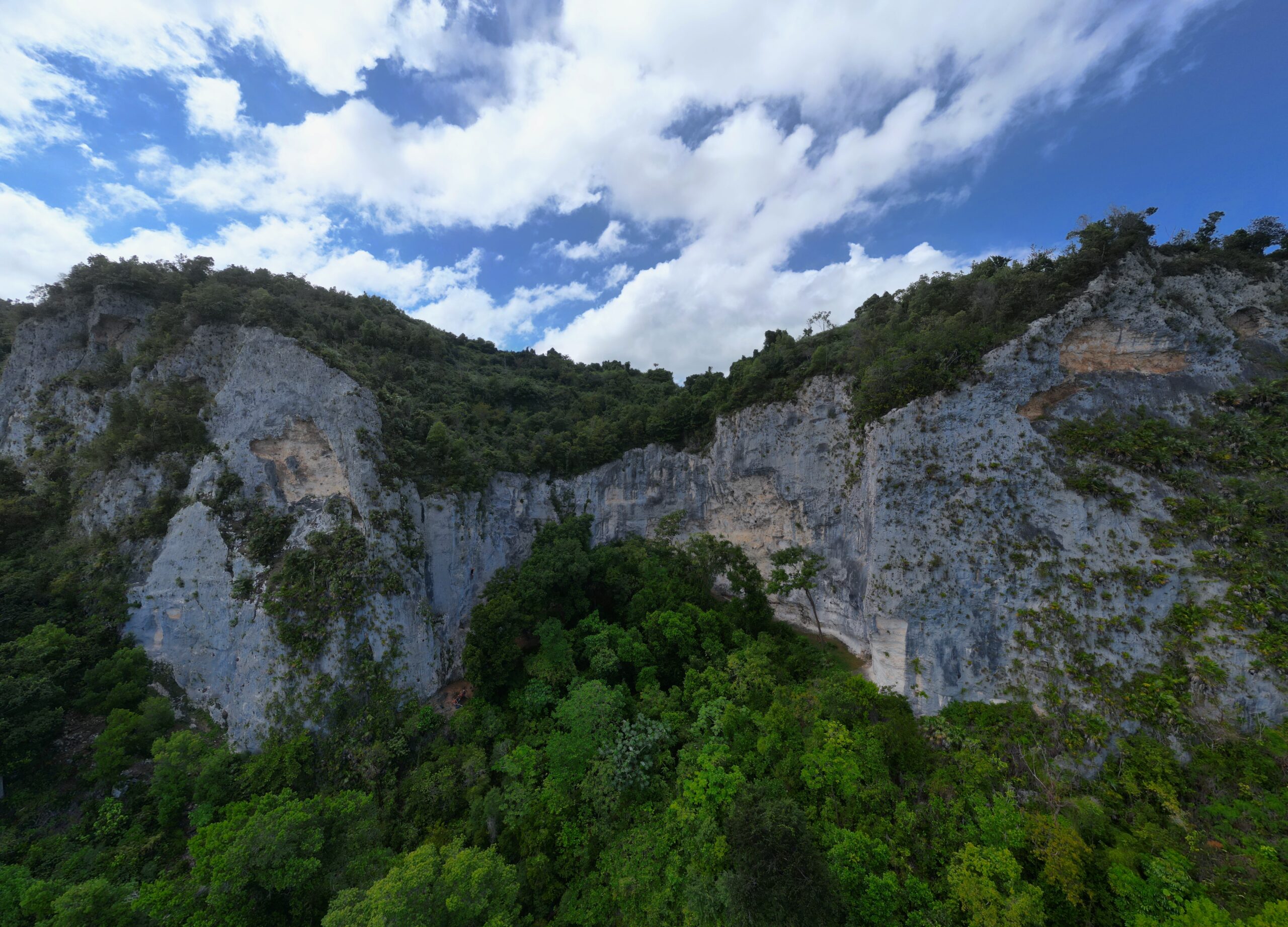
Flying Coconut Crag is a relatively new addition to the Puerto Rican climbing scene. On the drive there you will see massive limestone cliffs on either side of the valley which the road bisects. Flying Coconut and Caliche are the only developed crags in the area. Ciales has a lot of potential to be the Puerto Rican climbing capital. The owner has clearly put in a lot of work to develop the area. The approach trail has been carefully crafted and meticulously kept. It’s a rough 15-minute hike up the steep trail to reach the crag from the estacionamiento.

There is a sign posted at a not entirely obvious fork in the road, go right climbing over some tree roots. There are 48 climbs currently bolted with more routes being set all the time. There are deep benches placed at intervals at the foot of the rock wall. The location in question is pictured above. The bolted routes reside mostly within the bowl-like semi-circle starting with the exposed dirt patch in the bottom left. The owner requires a $5.00/person fee that he will be sure to remind you of if he sees you (paid via Venmo).
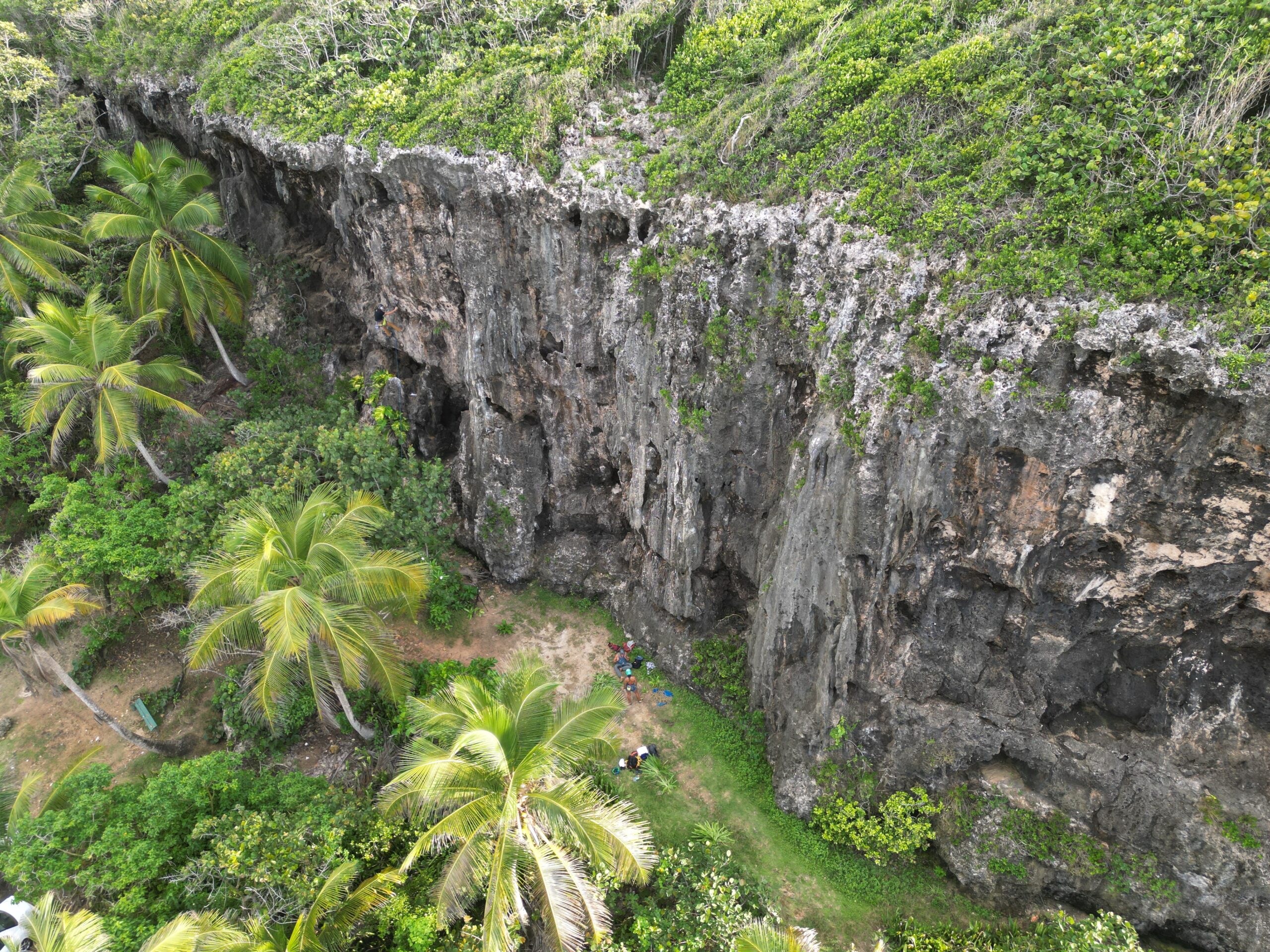
Puerto Hermina is in such a fun location, that I consider it a must-do. The crag is right next to the ocean and the small beach of the same name a short walk away is a great option for non-climbers in your group. There is a hiking trail and pavilions for lunch. It’s also a popular spear-fishing location. Estacione right next to the wall. The 10-step approach and shaded climbs for most of the day will be a big plus for many. There are only 5 bolted routes, all moderates. I found the climbing pumpier than expected.
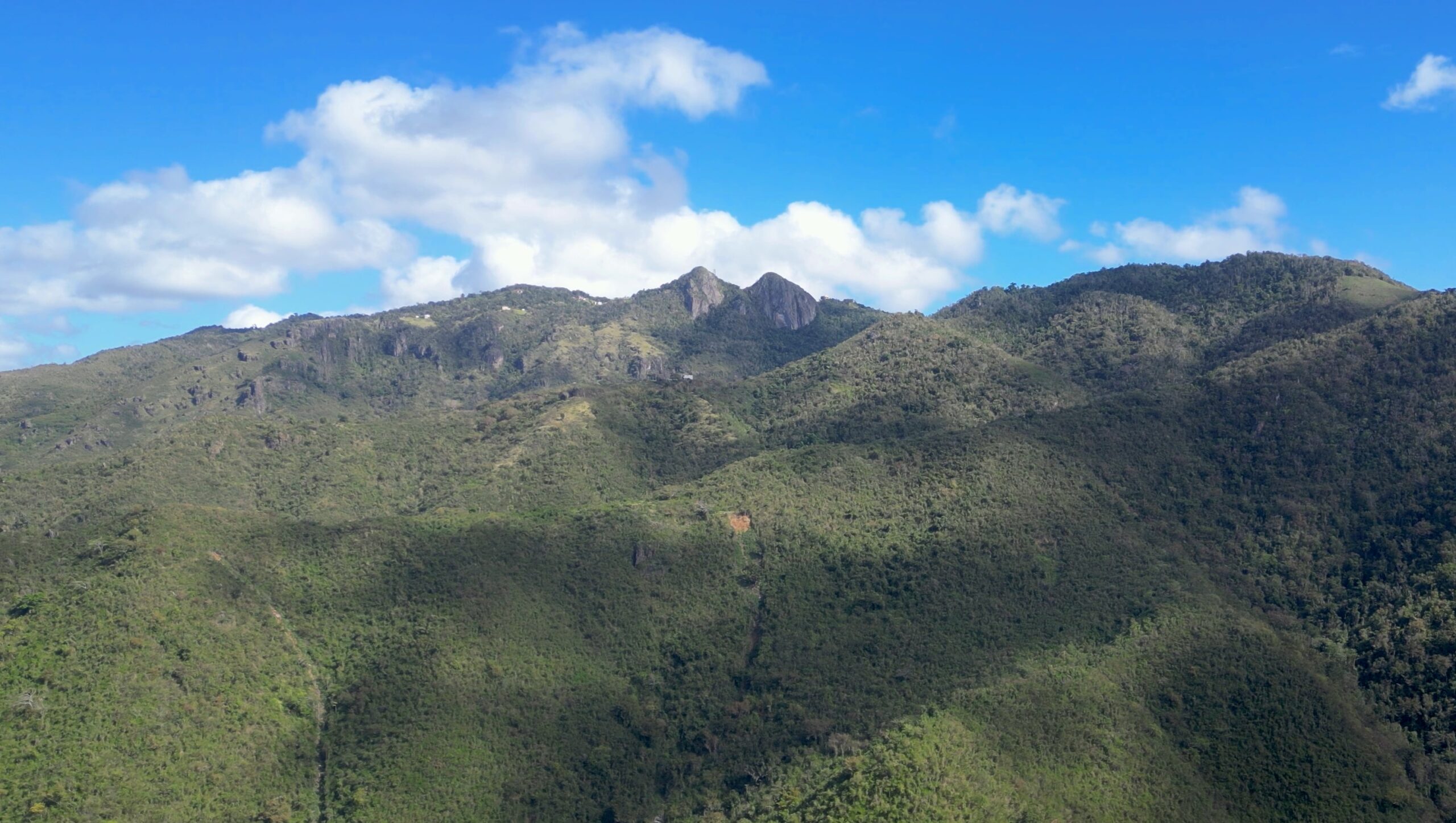
Cerro Las Tetas is a departure from the limestone typical to the island. The 85 longer, basalt climbs at the twin crags are often 5.10+ with a few decent moderates. From the estacionamiento, the approach hike will take about 15 minutes to arrive at the Right Teta. To get to the Left Teta, hike another 15 minutes. To park in the lot, you’ll need to get your hands on the code to the combination lock on the gate. Mountain Project has instructions on how to get it.
